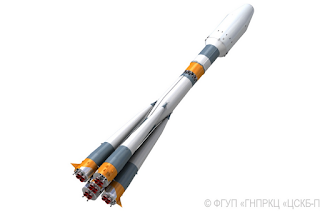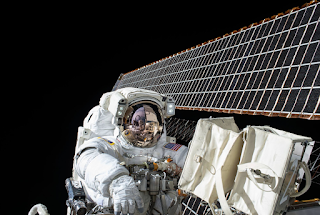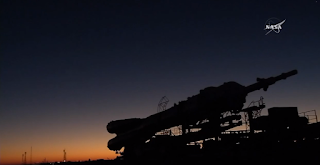Third Time's the charm: Gemini VI-A lifts off perfectly from Pad LC-19 on December 15, 1965.
While Gemini VII flew a long-duration mission in Earth orbit, NASA flight engineers reconfigured the Gemini VI mission to use Gemini VII as a rendezvous target. The first mission, Gemini VI, was cancelled when the Agena target vehicle was lost in an accident during launch over the Atlantic Ocean. The mission was revised to use Gemini VII as a target, and so the designation of the rendezvous mission was changed to Gemini VI-A.
Astronauts Tom Stafford (L) and Wally Schirra (R).
The Gemini VI-A crew included former Mercury astronaut Wally Schirra, making his second flight to space, and rookie astronaut Tom Stafford. Unlike the Gemini VII astronauts Frank Borman and Jim Lovell, they wore the standard Gemini space suits and were expected to be in space only for the one day. Their task was to reach the other spacecraft and perform a complex series of maneuvers. Originally the mission included docking with the Agena target vehicle, but the Gemini capsule had no provision for docking.
Rendezvouz acheived!
At five hours and four minutes into the flight, Captain Schirra caught sight of what he at first assumed was the bright star Sirius, but instead turned out to be Gemini VII. During the fourth orbit, the two spacecraft caught up to each other.
Gemini orbiting over the Earth.
Gemini VI displays a message in the window for Frank Borman in Gemini VII.
During the rendezvous, the spacecraft took turns approaching and flying formation with each other, eventually getting in formation only one foot apart (while flying 17,500 mph!). In one pass, astronauts Schirra and Stafford took the opportunity to send a jovial message in the window to Frank Borman. The sign read "Beat Army," a reference to the upcoming Army vs. Navy college football game coming up (In 1965 the game was a tie, in 2015, the game was held just recently on the 12th, and Navy beat Army). Astronauts Schirra, Stafford, and Lovell were all Naval Academy graduates, and Borman was an Army West Point graduate. After four hours and twenty minutes of formation flying, the two craft moved apart by 16 kilometers to avoid any collisions during the upcoming sleep period. Suddenly astronaut Schirra called down to NASA that an unknown object was approaching from a polar orbit. Before NASA could reply, Christmas music was heard on the radio and Schirra and Stafford played "Jingle Bells" on a harmonic and small bells, making the first time musical instruments were used in space.

Safe on board the recovery ship.
The next day, Gemini VI-A de-orbited and landed in the Atlantic Ocean only 11 miles from the rescue ship USS Wasp, making the most accurate landing so far in the American Space Program.



























